TWO-STROKE TUESDAY | 2001 KAWASAKI KX250 | COMPLETE TEST
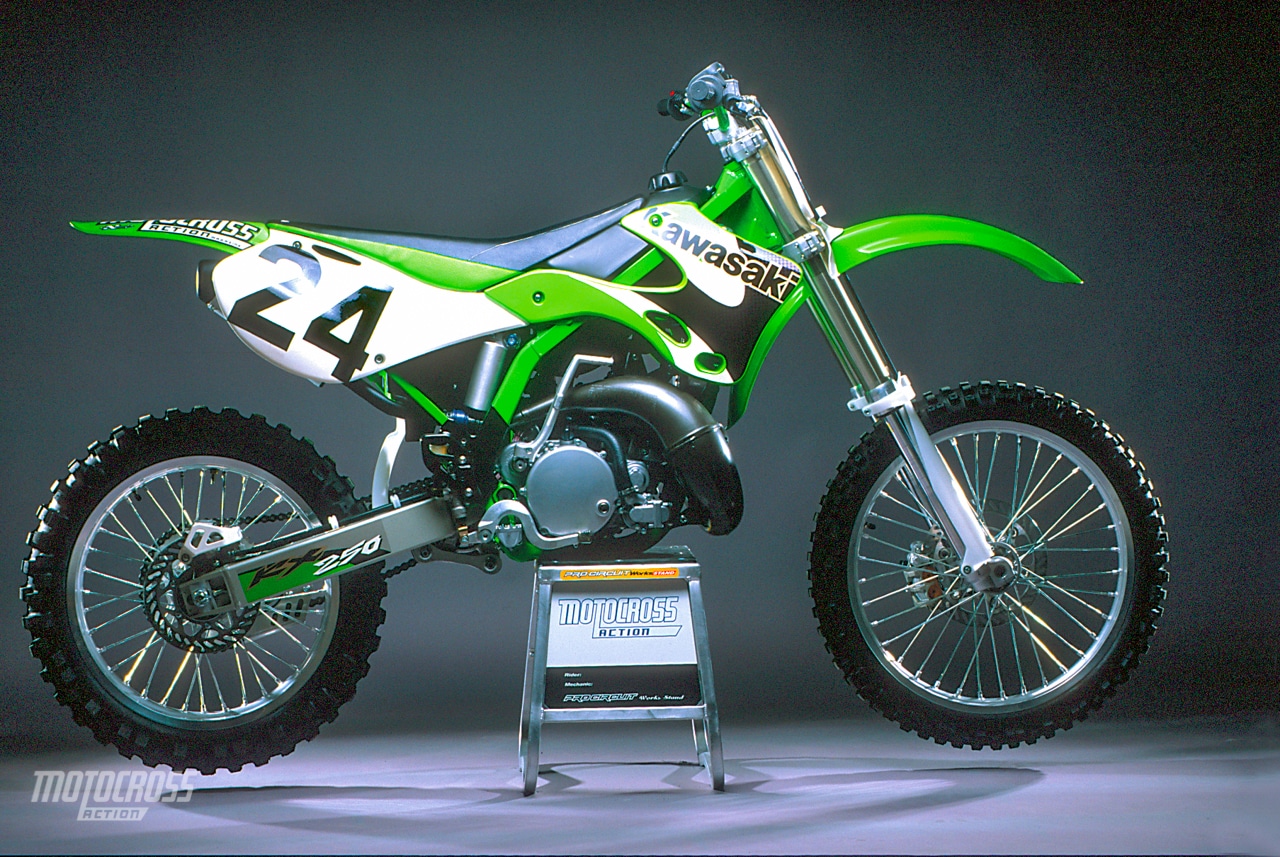 This is an archived MXA test from the December 2000 issue of Motocross Action Magazine. Get your MXA subscription today.
This is an archived MXA test from the December 2000 issue of Motocross Action Magazine. Get your MXA subscription today.
QUESTION ONE: IS THE 2001 ENGINE FAST?
Kawasaki has a rep as an engine company. What does that mean? Historically, Kawasaki has built awesome engines with broad powerbands, high horses and metered delivery. They haven’t always put these engine in the greatest rolling chassis–but the engines have always impressed.
So is the 2001 engine fast? Yes! It comes on strong, pulls through the middle with authority and has all the sensations you expect from a KX250. There is no hesitation with the KX engine. A twist of the wrist rewards the rider with forward motion. Wick it on and hang on.
QUESTION TWO: IS THE ‘01 ENGINE BETTER THAN THE ‘00?
Not really. It’s a shame that Kawasaki has built such great 250 engines over the last five years. Not because they aren’t fast, but because they are always compared to each other. Last year the KX250 made over 45 horsepower and offered a smoothed out version of its awesome ‘97 and ‘98 engines. While the 2000 engine was better than the ‘99 engine, it wasn’t as impressive or fun to ride as the earlier hard hitters. To the MXA test riders, the 2001 engine feels more like the ‘99 engine. It has less hit, a kinder blend of power, isn’t as aggressive down low and feels mellower. Kawasaki put a lighter flywheel on the 2001 engine and most MXA test riders prefer the older heavier flywheel feel. Luckily, your Kawasaki dealer can offer you heavier flywheels.
It’s still fast, and still makes plenty of power, but doesn’t have the startling acceleration that made the KX250 the Bike of the Year in the late ‘90s. This engine does its best work in the meat of the powerband. Rev it if you must, but it goes faster if it’s short-shifted. As with all KX250 engines, there are no half-throttle solutions to difficult circumstances. The 2001 KX doesn’t deliver power in small doses–you turn it on all the way or not at all.
QUESTION THREE: IS THERE A DOWNSIDE TO THE NEW ENGINE?
Yes. The jetting is confused at best. It’s very lean down low. So lean that it is reluctant to start on the first kick. It gets a little gurgly right before the midrange kicks in and then goes a little lean on top again. So, it’s lean, fat and lean–perhaps the hardest combination to cure.
QUESTION FOUR: HOW DID WE FIX THE JETTING?
To richen up the low-end we swapped the stock 52 pilot jet for a richer 55. This aided starting and gave the KX more fuel to work with on transition off the bottom. Next, we swapped the stock NAFF needle for an NALG. This needle has the same basic tapers as the stocker but is a different diameter. Then, depending on air temperature, we ran either the stock 160 mainjet or a 162 (colder air requires a bigger main).
Here is what we ran in our bike for SoCal’s sea level tracks:
Mainjet: 160 (162 option)
Pilot jet: 55 (52 stock)
Power Jet: 48
Needle: NALG (NAFF stock)
Slide: 8.0
Air screw: 2 turns
Clip: 2nd
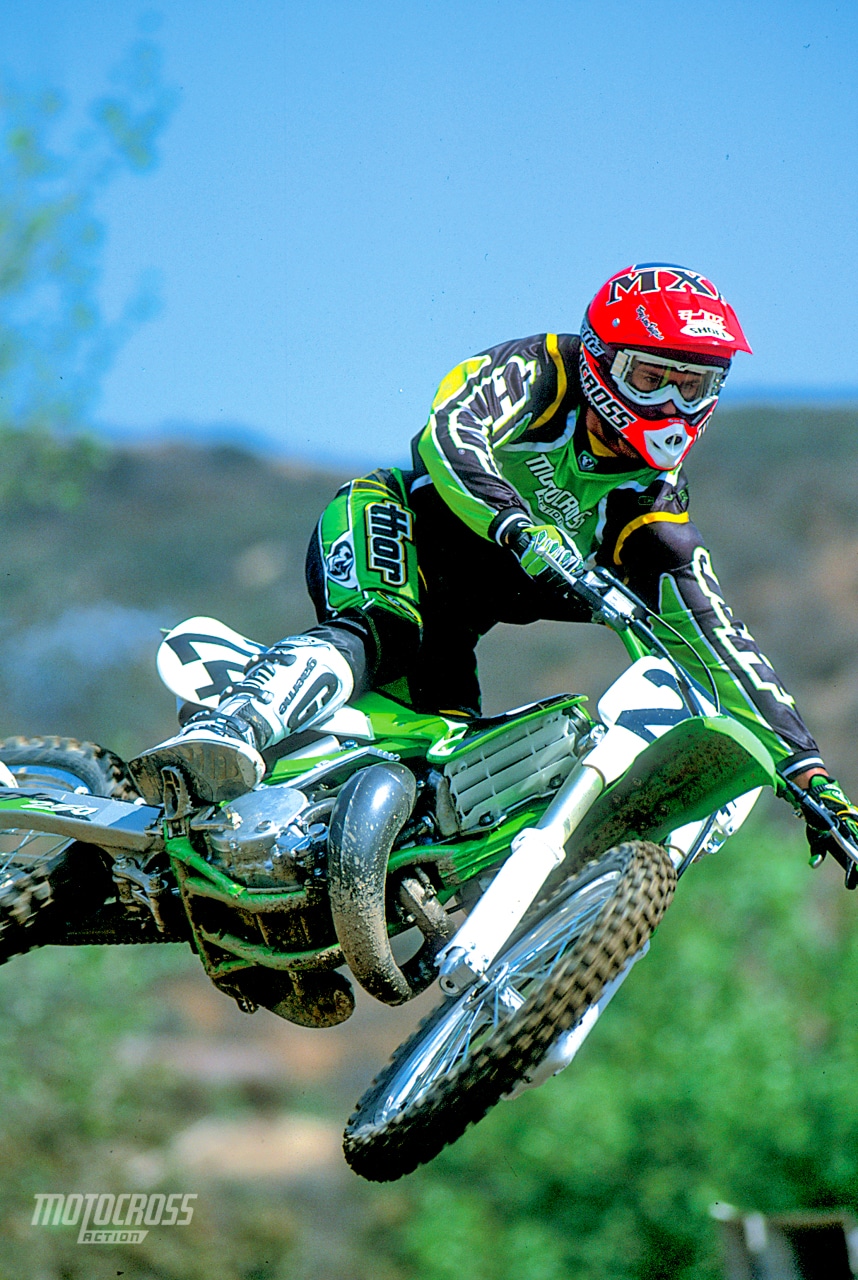
QUESTION FIVE: HOW GOOD IS THE GEARING?
Since this engine works best in the meat of the powerband and likes to be short-shifted, it could require lower gearing for specific tracks or riders. On tight tracks, tracks with jumps on the exit of turns or deep-going, the 2001 KX250 needs one more tooth on the rear sprocket. Faster riders and high-speed tracks can successfully use the stock gearing. Beginners and Novices will prefer the lower gearing because it helps the KX get to third gear easier (and third is the gear you want to use in almost every situation).
QUESTION SIX: WHAT ABOUT THE REAR SUSPENSION?
Kawasaki finally dropped the progressive-rate shock spring that has hampered the rear of the KX250 for the last couple of years. Switching to a straight-rate 5.0 kg/mm spring allows the KX to resist the temptation to drop down into the suspension stroke (which, paradoxically, makes the 2000 rear end too stiff through mid-sized bumps). A straight-rate spring keeps the rear of the 2001 KX held higher, which allows it to take advantage of the mellower damping curve at the top of the stroke (saving the firm damping for when it is really needed).
In stock trim, the 2001 KX250 rear suspension has more potential than the 2000 system. It tends to feel a little firm when new, but breaks in after the first hour of riding. A careful selection of high- and low-speed compression settings can dial the KX in for most track conditions.
QUESTION SEVEN: WHAT WAS OUR BEST SHOCK SETTING?
What was our best shock setting? For hardcore racing we recommend this shock set-up:
Spring rate: 5.0
Race sag: 97mm
Hi compression: 2 turns out (1.5 stock)
Lo compression: 13 clicks out (10 stock)
Rebound: 12 clicks out
QUESTION EIGHT: HOW GOOD ARE THE KAYABA FORKS?
Very much the same as last year. Why? Because they are relatively unchanged. The bladder-style forks were a brand new idea in 2000 and the idea has a lot going for it. Most notably, the rubber bladder acts in much the same manner as the bladder in a rear shock. As the fork compresses, the forks’ internal pressure rises, causing the oil-free bladder to compress. The trapped air in the bladder provides increased compression damping from mid-stroke on.
If you plan on racing the bike straight off the showroom floor, you will like the forks.
QUESTION NINE: WHAT ARE THE BEST FORK SETTINGS?
What was our best setting? For hardcore racing we recommend this set-up:
Spring rate: 0.43 kg/mm
Oil height: 70mm
Compression: 14 clicks out (10 stock)
Rebound: 11 clicks out (12 stock)
Fork leg height: 5mm above top of the stanchion
Notes: Don’t be shocked by the unusually high oil height. The air-free bladder displaces oil and thus has to be compensated for. If you are a supercross rider, very fast or very fat, you might consider 0.44 fork springs. The Kawasaki part number for the 0.44 kg/mm spring is 44026-1691.
QUESTION 10: HOW DOES IT HANDLE?
The KX250 chassis is getting very long in the tooth. It’s been around in various forms for a decade (and in none of those years was it a crisp and accurate handler). It is very predictable, but it is also a very big chassis. The width of the perimeter frame (at the steering head) doesn’t give the KX250 much chance of cranking tight turns. It feels long, it feels wide and it feels tall. The KX is at its best on flat ground. It tracks around flat corners (especially on hard-pack) with amazing accuracy. Why is it able to turn so tight on the flat, but not in the soft? Because on flat ground, you don’t lean the bike hard into the ground but instead, depending on steering input. The KX steers well, but the frame doesn’t allow it to be bent into berms.
One thing that helps the KX immensely is the 20-inch front wheel. Kawasaki dealers offer the option and it enhances what the KX does well (flat corners), while taking the bite out of stutter bumps and G-outs.
QUESTION 11: IS THE KAWASAKI IMPROVED OR WARMED-OVER?
Paradoxically, Kawasaki engineers made major improvements to a bike that is basically a warmed-over version of the 1997 KX250. How so? Back in ‘97 the KX250 was the omnipotent motocross weapon. It had excellent suspension, an awesome engine and acceptable ergos. In 2001, the engine, suspension and ergos are relatively unchanged–which means that the package itself is a rerun of a five-year-old bike.
However, for the first time in that five-year span, Kawasaki tried to fix the irritating little flaws that they always ignored. By addressing the irritants, but ignoring the overall package, Kawasaki has successfully spotted the trees, but can’t find the forest.
QUESTION 12: WHAT DID THEY IMPROVE
What did they improve? Glad you asked.
Brakes: Mushy brakes are a Kawasaki tradition, but for 2001 they did something about them. (1) The front brake caliper has 19 percent larger pistons. (2) The front master cylinder has a 1.5mm-larger piston. (3) The caliper castings are lighter. (4) The brake pad compounds are softer (and thus grippier).
Shifting: What shifting? Consumer and MXA complaints finally forced Kawasaki to act on their infamous shifting problems. The engagement dogs have been narrowed and the engagement slots have been widened (effectively putting a smaller dog into a bigger dog house). With the larger window of shift opportunity, there is less chance of the KX250 tranny jumping out of gear or sticking in gear.
Weight: KX’s have always been porkers. That stamped steel perimeter frame is far from petite, but for 2001 the engineers trimmed weight off the exhaust pipe, silencer, triple clamps, flywheel, fork legs and shock linkage bolts. The total weight savings is minuscule, but it’s a step in the right direction.
Clutch: MXA test riders prefer to run KX500 clutch springs in the KX250 clutch to keep it alive. For 2001, Kawasaki beefed up the clutch pressure plate to keep it from warping under the load. Clutch action is noticeably improved.
What didn’t they improve? The power, handling, ergonomics and suspension (especially compared to five years ago).
QUESTION 13: WHAT DID WE HATE?
The hate list:
(1) Decals: At least for 2001 Kawasaki was smart enough to make the graphics look different than last year (which they didn’t do between ‘99 and ‘00). But the aesthetics have run their course.
(2) Tank: The black gas tank makes it hard to see the fuel level. Unfortunately, our complaints about the KX’s black gas tank have gone unheeded and several manufacturers have joined the black-tank brigade.
(3) Bars: The stock handlebars are prone to bending–and it doesn’t always take a crash before they start flaking paint at the crossbar juncture.
(4) Grips: Maybe it’s just us, but KX grips feel a little fatter than YZ or CR grips.
QUESTION 14: WHAT DID WE LIKE?
The like list:
(1) Pipe: The gray pipe coating is the best thing any manufacturer ever put on a bike. It’s is durable, non-rusting and trick looking.
(2) Air filter: The air filter locating system uses two prongs. We like this, but always reach in the airbox and make sure the bottom prong is in the hole.
(3) Bar clamps: The eccentric handlebar clamps can be rotated forward and backward to give a rider two choices of bar positioning (we rotate them forward).
(4) Frame guards: Only Kawasaki and KTM offer plastic frame guards to keep the frame spars from scratching.
(5) Black box: It used to be so big that it filled up the airbox and made taking the sub-frame off a hassle. It’s smaller for 2001, but still a hassle.
(6) Straight-rate springs: This spring rate may not be perfect for every rider, but it’s better than the progressive-rate shock spring–which didn’t fit anybody.
QUESTION 14: WHAT DO WE REALLY THINK?
The MXA wrecking crew is proud to have picked the Kawasaki as the 250cc Bike of the Year in ‘97, ‘98 and ‘99. And if this was ‘97, ‘98 or ‘99, the 2001 KX250 would still be the Bike of the Year–but it’s not. Time marches on. Kawasaki has not.
The KX250 is still an effective motocross weapon. Luckily, it was so omnipotent in ‘97,’98 and ‘99 that the competition is just now catching up to it as far as power output. But, conversely, they have surpassed it in handling, ergonomics, suspension, attention to detail and reliability. There are no surprises in the 2001 KX250. It is as it was.


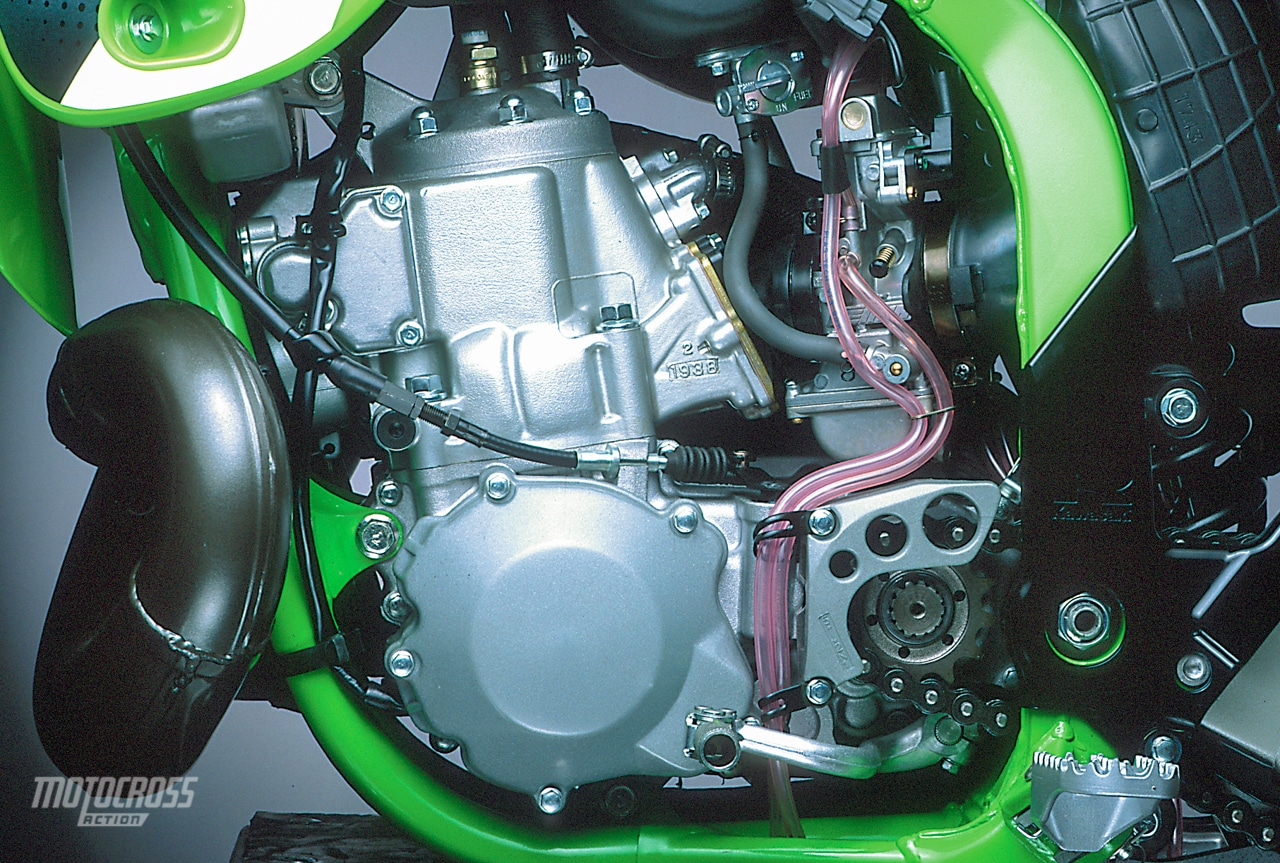
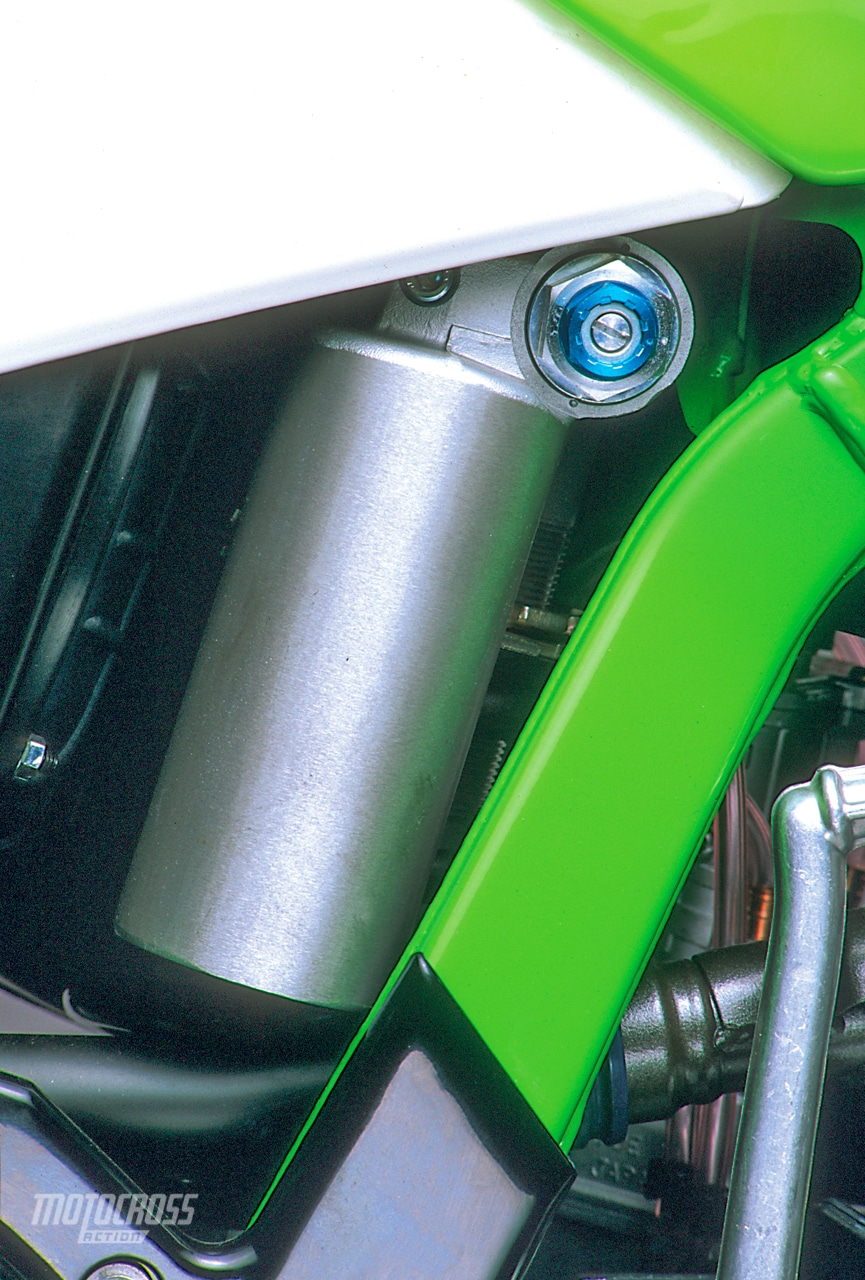
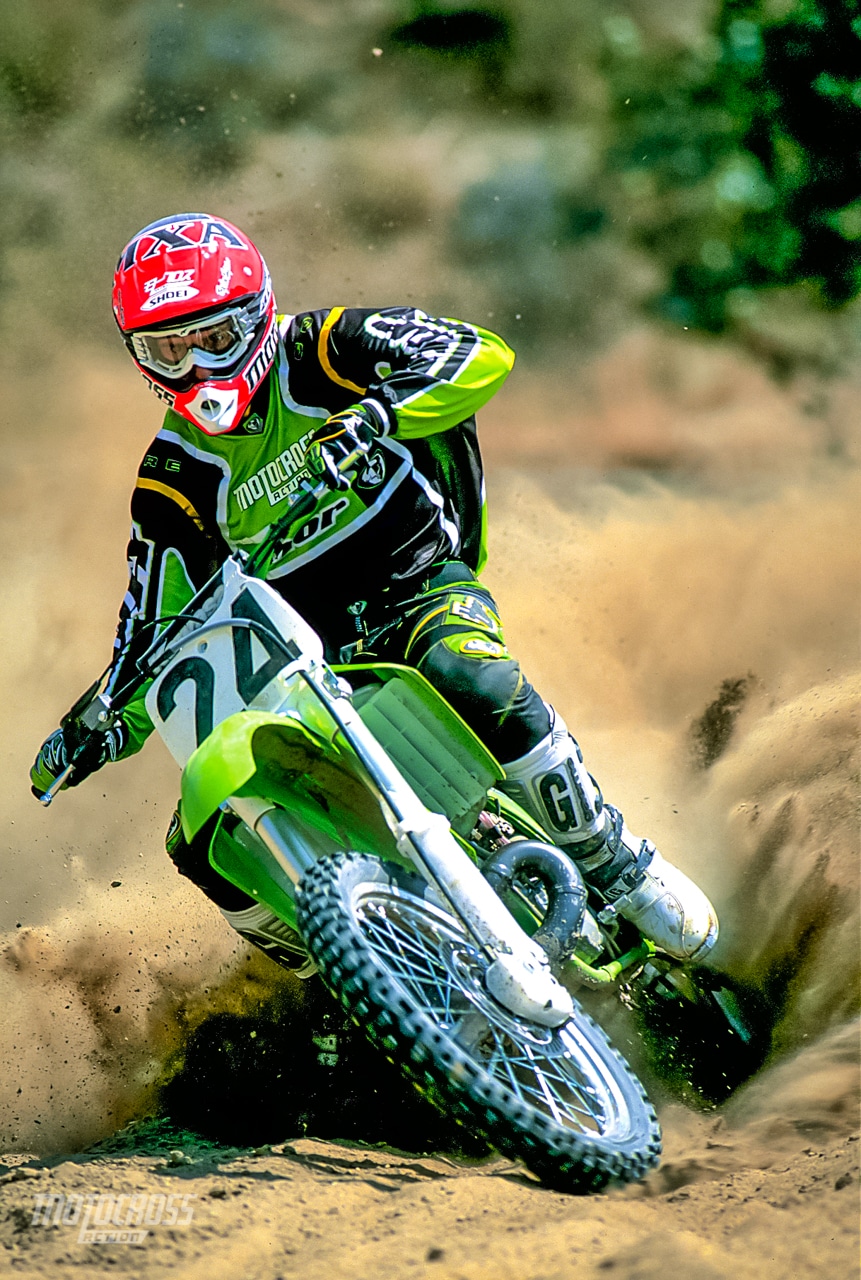
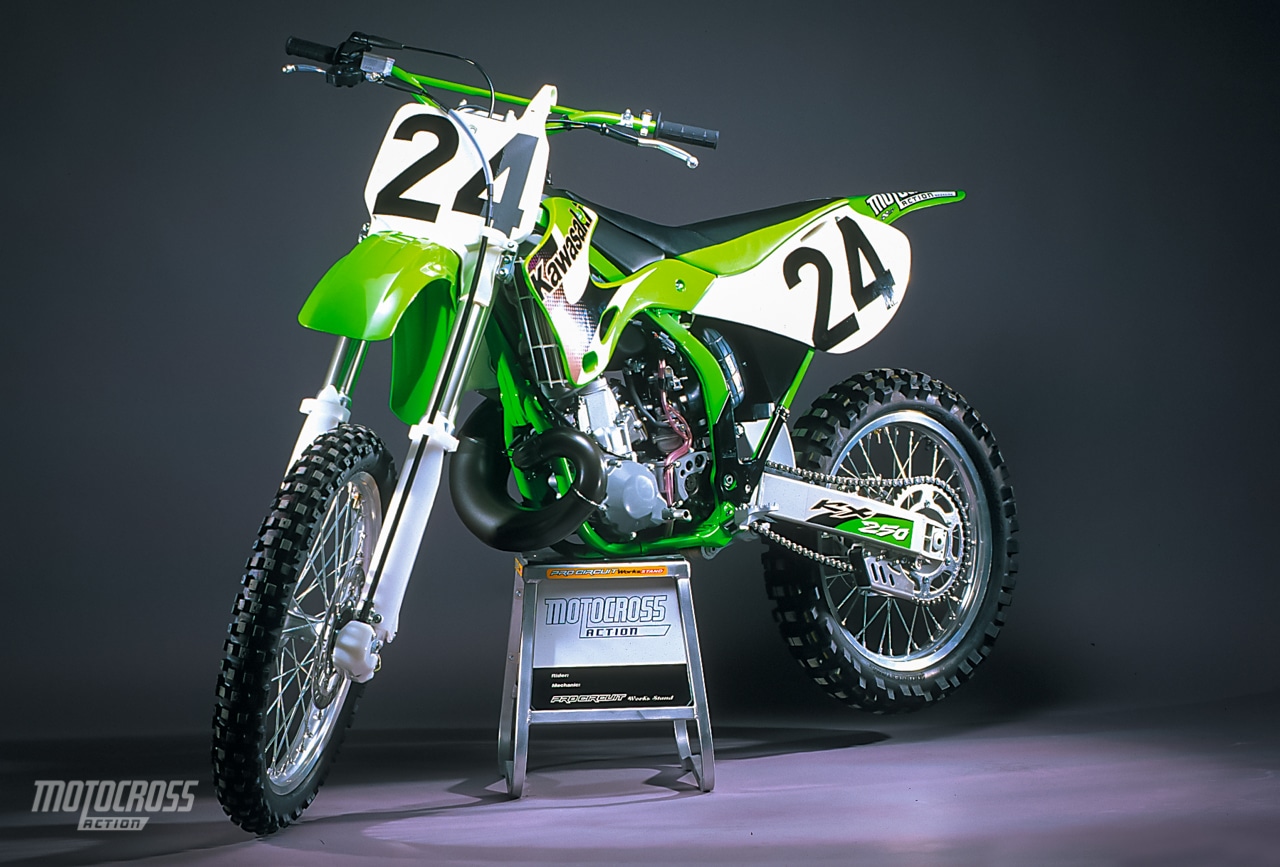
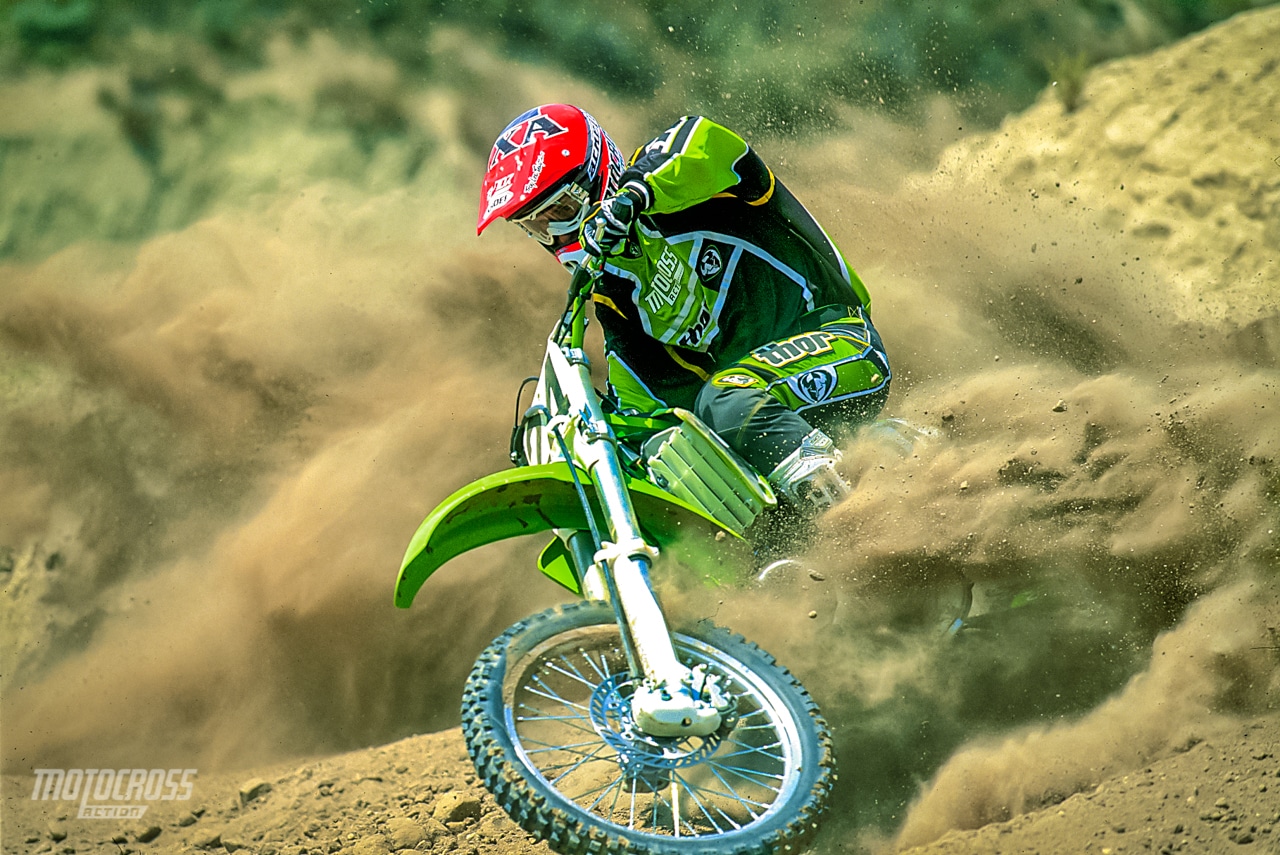
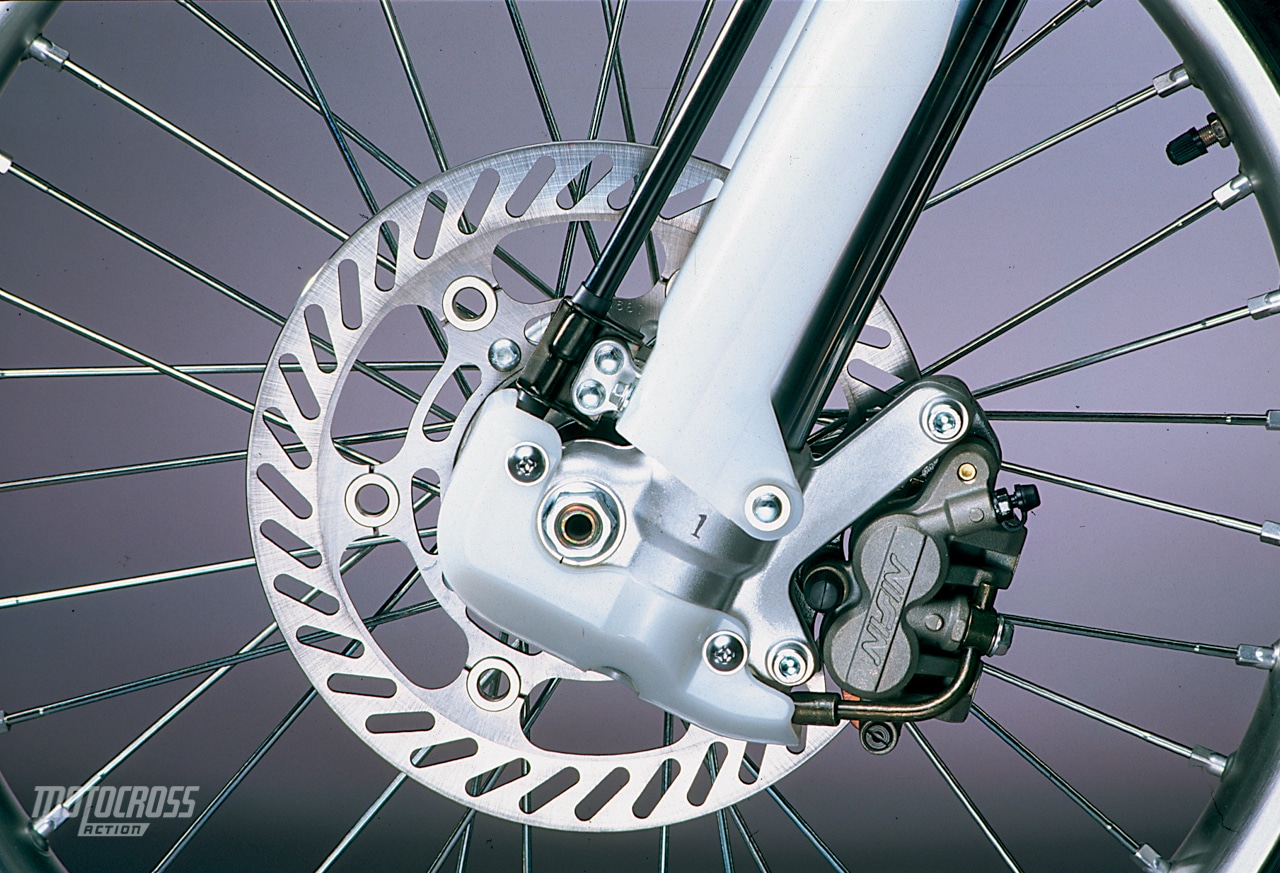
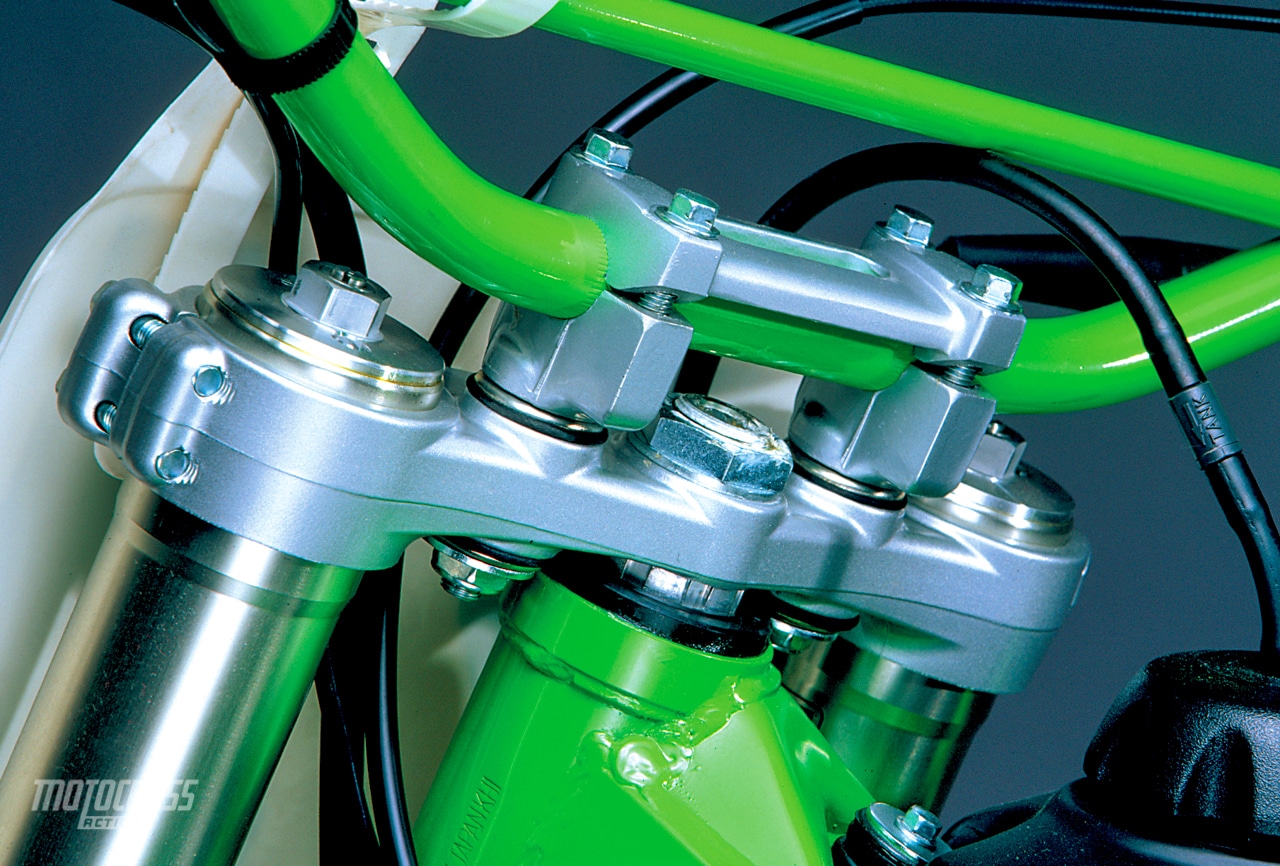



Comments are closed.